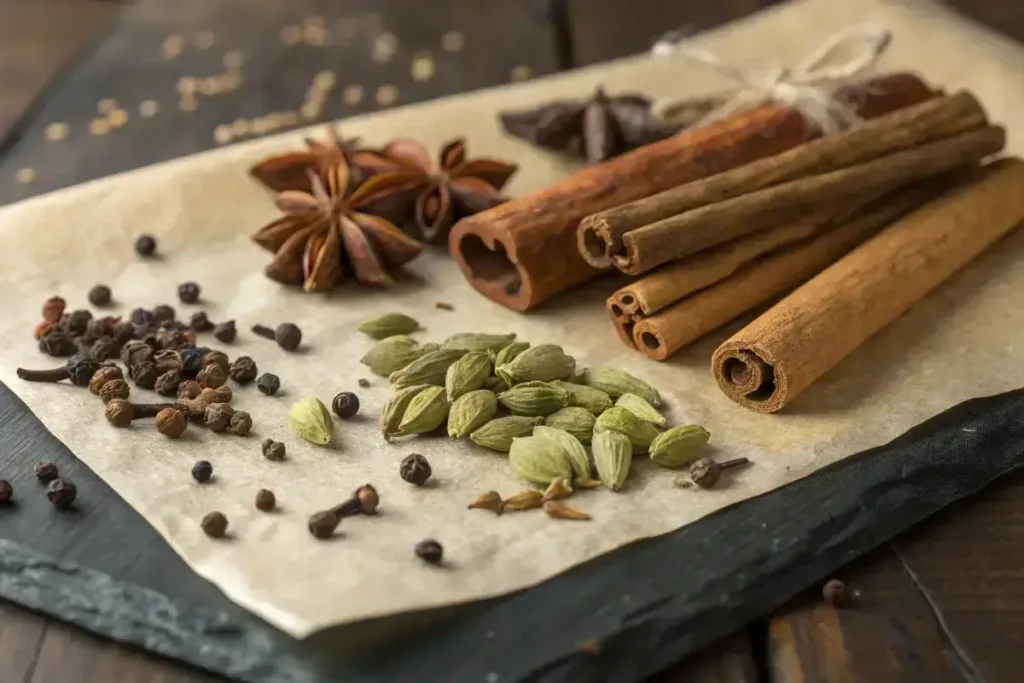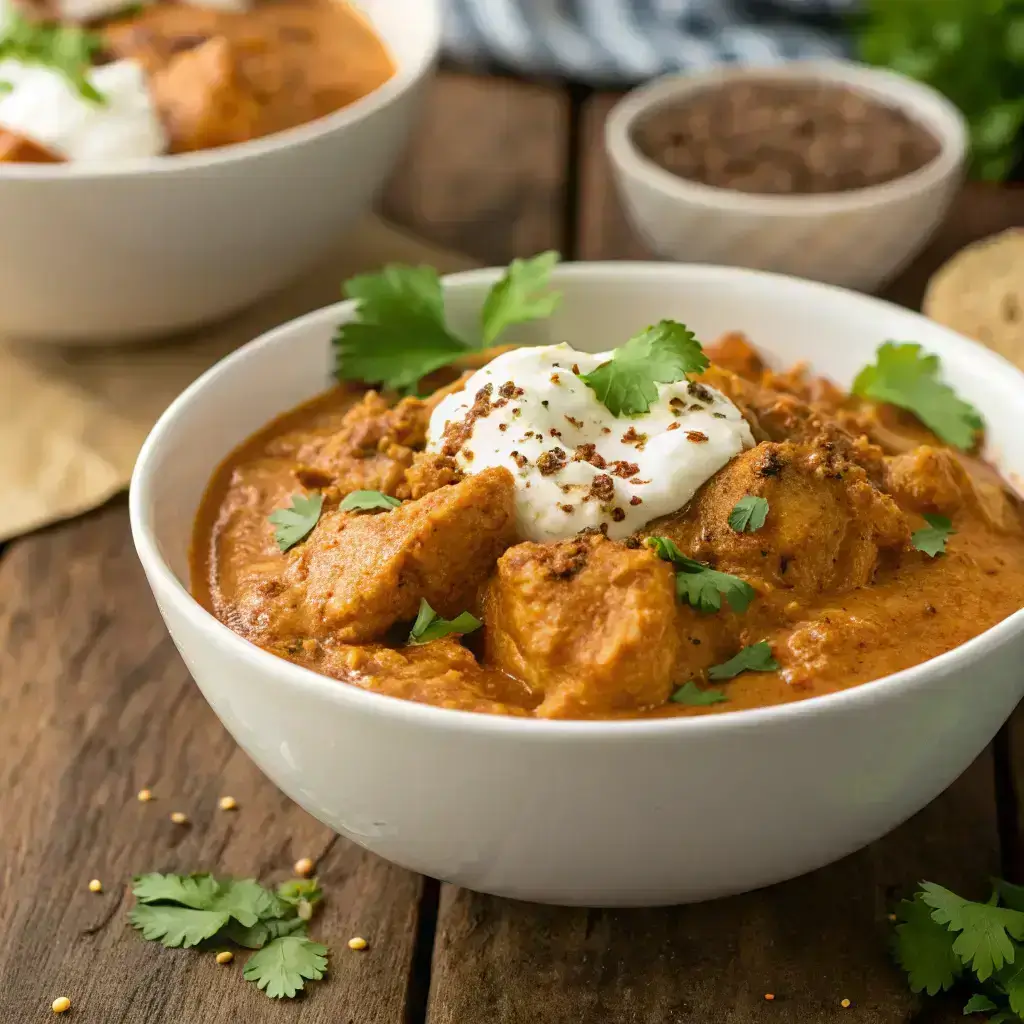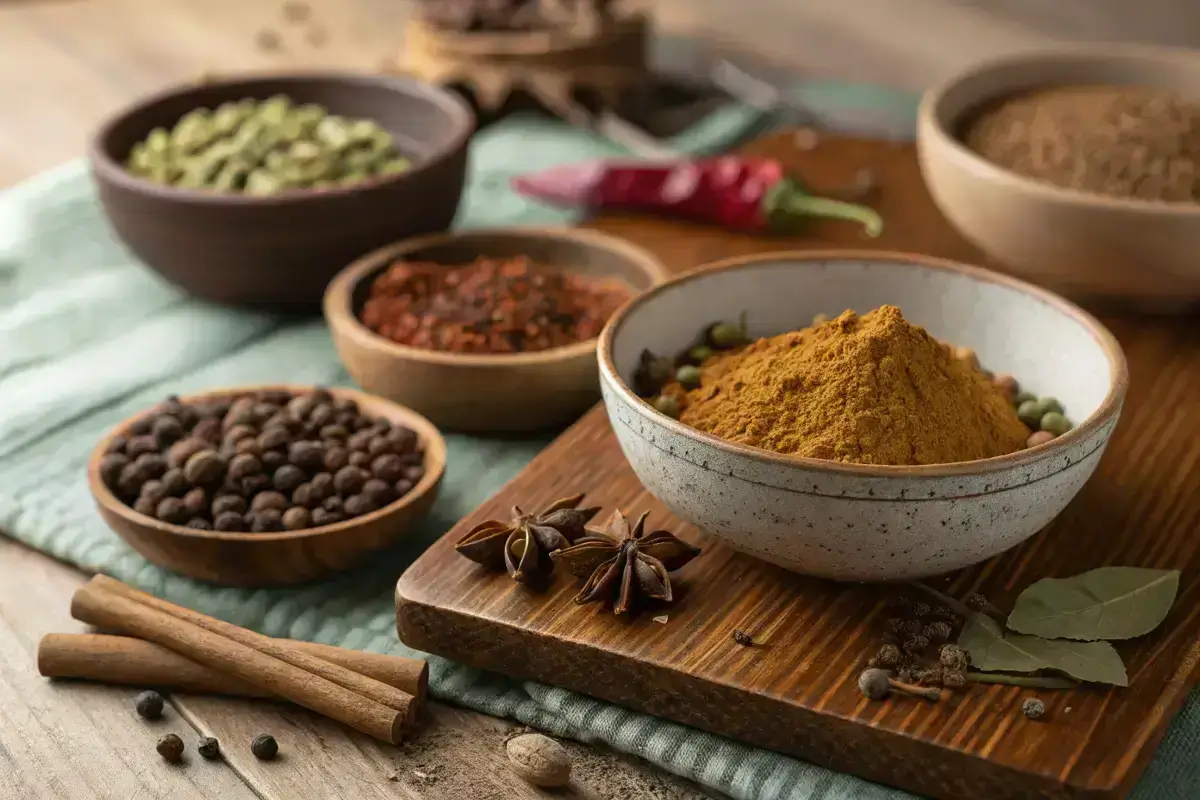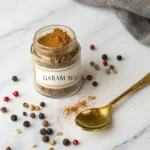In This Recipe
Garam Masala – A Flavorful Keto Kitchen Essential
If you’re just starting your keto journey or looking to elevate your low-carb meals, garam masala might become your new secret weapon. This deeply aromatic Indian spice blend doesn’t just pack flavor—it transforms simple ingredients into warming, soul-nourishing meals. Whether you’re making keto curry, a hearty vegetable stir-fry, or spicing up baked meats, garam masala adds depth without adding carbs. In this article, we’ll explore what garam masala is made of, how it differs from curry powder, what it tastes like, and why it’s a keto-friendly staple. Ready to spice up your pantry?
My Story with Garam Masala and Its Keto-Friendly Appeal
A comforting spice blend that brought healing back to my kitchen
Back when I started keto, my meals were clean—but honestly, they felt bland. I missed that emotional connection to food, the kind that fills your kitchen with scent and your soul with comfort. That changed the day I opened a fresh jar of garam masala.
I still remember it. I was experimenting with a creamy keto butter chicken recipe, something warm and satisfying for a rainy Oregon evening. The first sprinkle of garam masala was like a hug from the inside out. Suddenly, I wasn’t just eating; I was enjoying food again. That was huge for someone who used to fear every ingredient on the plate.
Garam masala reawakened my love for cooking. It helped me see that keto isn’t about restriction—it’s about choosing ingredients that nourish without guilt. The blend felt like a gift from generations of Indian kitchens to mine, and soon I was adding it to sautéed cauliflower rice, roasted chicken thighs, and even low-carb soups.
Garam masala in the keto lifestyle: flavor without carbs
Unlike many pre-made sauces or flavorings, garam masala contains zero carbs, zero sugar, and no fillers. It’s just ground spices—pure, bold, and clean. That means you can add layers of warmth and complexity to your dishes without breaking ketosis.
For anyone struggling to keep their meals exciting, garam masala is a simple way to change that. Even something as simple as a charcuterie cup appetizer can benefit from a lightly spiced roasted nut mix on the side.
The best part? You don’t need to be a chef to use it. Whether you sprinkle it over roasted vegetables or stir it into a slow cooker meal, this blend works magic with just a pinch. In the next section, we’ll break down exactly what’s inside garam masala—and how those ingredients work together to bring heat, depth, and warmth to your favorite keto meals.

What Is Garam Masala Made Of?
Common ingredients in garam masala blends
At its core, garam masala is a blend of ground spices—nothing artificial, nothing mysterious. The exact recipe varies by region and family, but some foundational ingredients remain consistent across most versions. These typically include:
- Coriander – Adds citrusy, nutty depth
- Cumin – Earthy and smoky, it builds the base
- Cloves – Bring a sweet sharpness
- Cardamom – Fresh and slightly minty
- Black pepper – Adds subtle heat
- Cinnamon – Warms up the blend
- Nutmeg – Offers soft sweetness and depth
Some versions might include bay leaves, fennel seeds, or even dried chili. While the ingredients themselves are simple, the way they combine creates something truly powerful: warmth without spiciness, depth without bitterness.
What makes garam masala unique is its balance—it doesn’t let any one spice dominate. Instead, the spices support each other like instruments in a symphony. When I add it to a creamy cauliflower mash or a rich, slow-cooked lamb, I taste comfort, not chaos.
Regional variations: from Punjab to South India
The phrase “garam masala” literally translates to “warming spices” in Hindi, but there’s no single formula. In the north of India, particularly in Punjabi cuisine, it’s often heavier on cinnamon, cloves, and cardamom—perfect for meat-based dishes like butter chicken or lamb curry.
In South India, you might find garam masala with added curry leaves, star anise, or even dried coconut. The flavors are bolder, often suited to spicier, more pepper-forward dishes.
Homemade versions may also differ in how the spices are prepared. Some cooks toast the whole spices before grinding to release their oils and boost aroma. Others mix pre-ground spices for convenience.
If you’re buying it ready-made, check the label. Look for blends with no added salt, starch, or preservatives—especially if you’re staying keto. Better yet, try mixing your own. It’s easier than you think, and you can tailor it to your taste preferences.
In my kitchen, I keep a small glass jar of homemade garam masala made from toasted, freshly ground spices. It’s fresher, more potent, and much more rewarding than anything store-bought. The aroma alone makes it worth the effort.
Substitutes and Comparisons
What can I use instead of garam masala?
If you’re cooking a keto meal and run out of garam masala, don’t worry—you’ve got options. While nothing is a perfect match for its rich complexity, you can come surprisingly close with a few pantry staples.
A simple substitute:
Mix equal parts ground cumin, ground coriander, and a pinch of cinnamon. If you have cloves or cardamom, even better. This combo won’t give you the full flavor of garam masala, but it’ll deliver a warm, earthy kick that works well in soups, stews, and meat rubs.
Another option? Allspice or pumpkin pie spice. These blends are sweeter and more dessert-leaning but can be used in a pinch for vegetable dishes or baked savory recipes. Just be cautious—some contain added sugar or fillers, which can throw off your macros. Always check labels.
Garam masala vs curry powder: What’s the real difference?
Many people confuse garam masala with curry powder, but they’re not the same at all.
Garam masala is usually added at the end of cooking to bring warmth and aroma. It’s complex, fragrant, and does not contain turmeric, so it doesn’t have that bright yellow color.
Curry powder, on the other hand, is typically used at the beginning of cooking. It’s a British invention based loosely on Indian flavors and almost always contains turmeric, giving it that golden hue. It also tends to be more mild and savory, with hints of sweetness from fenugreek or mustard seed.
Here’s a quick comparison:| Garam Masala | Curry Powder |
|---|---|
| Warm, fragrant, layered spice mix | Savory, earthy, mild blend with turmeric |
| No turmeric | Contains turmeric |
| Added at the end of cooking | Added at the beginning of cooking |
| Used in traditional Indian cooking | Created for Western palates |
In keto cooking, both blends can work—but garam masala tends to add more depth and complexity. If your recipe calls for curry powder but you want something more aromatic, garam masala can step in beautifully.

Taste, Use, and Keto Recipes
What does garam masala taste like?
Garam masala has a rich, layered taste that’s both warm and slightly sweet. It’s not spicy in a chili-pepper sense—but rather warming from spices like cinnamon, black pepper, cloves, and cardamom.
The beauty of garam masala is that its flavor unfolds. At first taste, you may notice sweetness from cinnamon or nutmeg. Then comes the slight heat from pepper and cloves. Finally, the more subtle floral or citrusy notes of cardamom and coriander round it out.
If you’re used to bold seasoning blends like taco mix or Cajun spice, garam masala will surprise you—it’s refined, not overpowering. That balance makes it a fantastic companion for mild proteins, vegetables, and even keto-friendly sauces.
When added to creamy dishes, it brings warmth. In broths or stir-fries, it provides depth. And because it doesn’t contain any salt, it won’t mess with your macros or sodium levels.
How to use garam masala in keto-friendly cooking
Here’s where things get exciting—garam masala is incredibly versatile on keto. You don’t need to cook Indian food to enjoy it. You just need a pinch of creativity.
Here are some of my favorite ways to use garam masala in keto meals:
- Keto Butter Chicken – Stir in garam masala at the end for that classic restaurant-style finish.
- Spiced Cauliflower Rice – Sauté riced cauliflower with garlic, onion, and a sprinkle of garam masala.
- Roasted Veggies – Toss broccoli, bell peppers, or zucchini in olive oil and garam masala before roasting.
- Masala Deviled Eggs – Add a pinch to your egg yolk mix with mayo and mustard.
- Ground Meat Dishes – Use it to season turkey or beef patties for a warm, unexpected twist.
One tip: because garam masala is so fragrant, it’s usually added at the end of cooking, not the beginning. That preserves the aroma and avoids bitterness from over-toasting the spices.
Garam masala gives keto cooking what many people feel it lacks—richness, depth, and comfort. And it does so without a trace of carbs.
PrintGaram Masala: The Keto Spice Blend That Transforms Every Dish
A warm, aromatic garam masala spice blend made with classic keto-friendly spices. Perfect for meat, vegetables, and sauces.
- Prep Time: 5 mins
- Cook Time: 3 mins
- Total Time: 8 mins
- Yield: 1/4 cup
- Category: Spices & Blends
- Method: Toasted and Ground
- Cuisine: Indian
Ingredients
1 tbsp coriander seeds
1 tbsp cumin seeds
1 tbsp black peppercorns
1 tsp cloves
1 tbsp green cardamom pods
1 cinnamon stick (2-inch)
1/2 tsp ground nutmeg
Instructions
1. Toast all whole spices (except nutmeg) in a dry skillet over medium heat for 2–3 minutes until fragrant.
2. Let spices cool completely.
3. Transfer to a spice grinder or mortar and grind to a fine powder.
4. Mix in ground nutmeg.
5. Store in an airtight jar away from light and heat.
Notes
You can adjust spice ratios to taste.
Double the recipe and store extra for up to 3 months.
Add at the end of cooking for the best flavor.
Frequently Asked Questions About Garam Masala
What is garam masala made up of?
Garam masala is typically made of warming spices like coriander, cumin, black pepper, cardamom, cinnamon, cloves, and nutmeg. Some blends also include bay leaves, fennel, or mace. It’s a spice mix with no fillers, sugars, or carbs—making it a perfect keto-friendly flavor booster.
What is the closest seasoning to garam masala?
While nothing replicates garam masala exactly, a close substitute would be a mix of ground cumin, coriander, cinnamon, and clove. Allspice or pumpkin pie spice may work in a pinch for milder recipes, though they’re sweeter and less complex.
What’s the difference between curry powder and garam masala?
Curry powder is a British invention containing turmeric, used early in cooking for its earthy flavor and yellow color. Garam masala is Indian, has no turmeric, and is added at the end of cooking to preserve its aroma and warmth.
What does garam masala taste like?
Garam masala has a layered, warming flavor. It’s aromatic, mildly sweet, and not spicy-hot. It adds complexity and richness to savory dishes, with a comforting finish that lingers.
Conclusion
Garam masala isn’t just a spice blend—it’s a keto kitchen essential. With its carb-free composition and warm, complex flavor, it elevates everything from soups to meat dishes and veggie bowls. Whether you’re a seasoned cook or just starting keto, adding this fragrant mix to your pantry brings both tradition and taste to your plate. Don’t be afraid to experiment—you’ll find that just a pinch can transform your meal, your mood, and maybe even your relationship with food.

